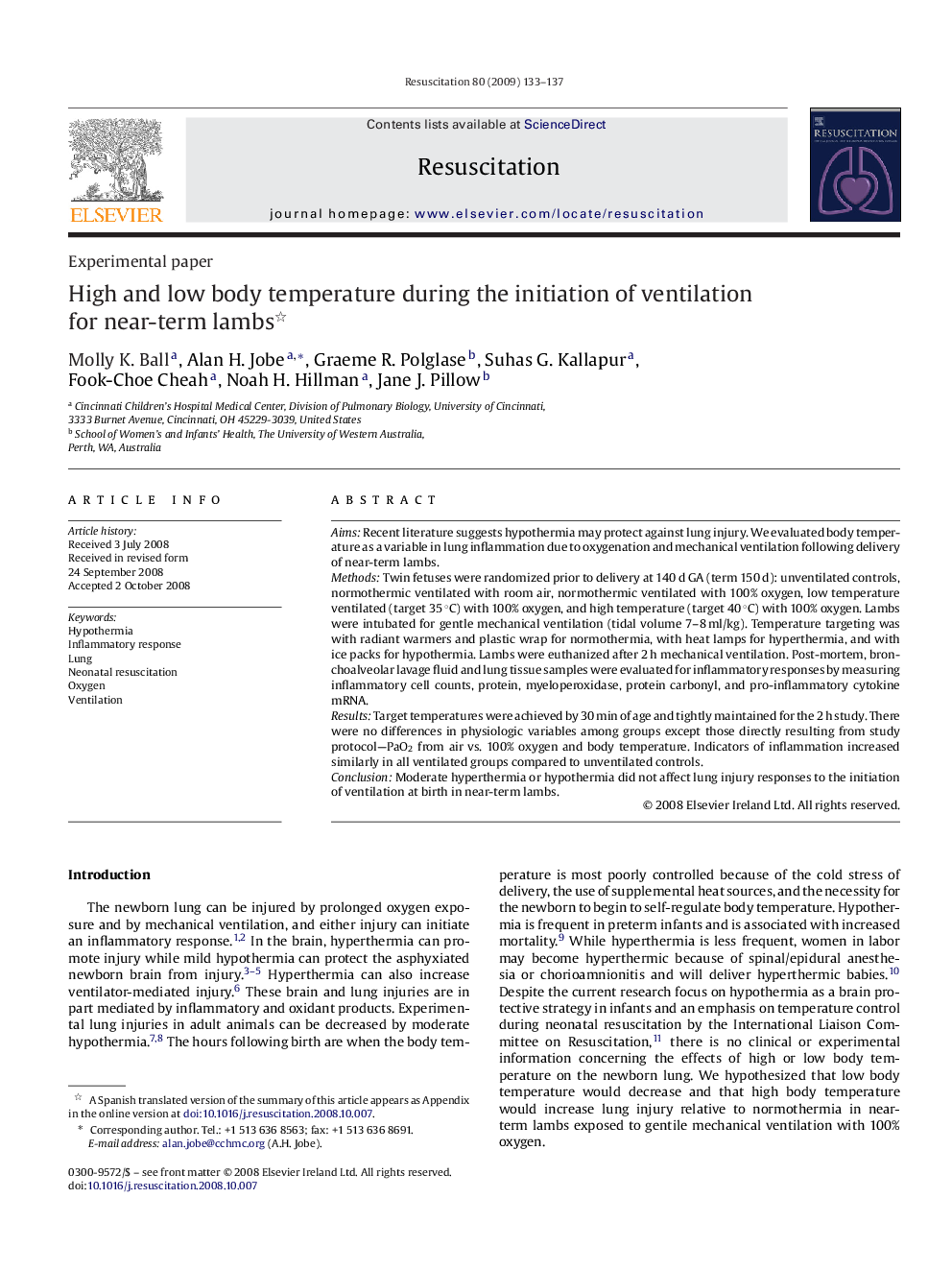| Article ID | Journal | Published Year | Pages | File Type |
|---|---|---|---|---|
| 5999469 | Resuscitation | 2009 | 5 Pages |
AimsRecent literature suggests hypothermia may protect against lung injury. We evaluated body temperature as a variable in lung inflammation due to oxygenation and mechanical ventilation following delivery of near-term lambs.MethodsTwin fetuses were randomized prior to delivery at 140 d GA (term 150 d): unventilated controls, normothermic ventilated with room air, normothermic ventilated with 100% oxygen, low temperature ventilated (target 35 °C) with 100% oxygen, and high temperature (target 40 °C) with 100% oxygen. Lambs were intubated for gentle mechanical ventilation (tidal volume 7-8 ml/kg). Temperature targeting was with radiant warmers and plastic wrap for normothermia, with heat lamps for hyperthermia, and with ice packs for hypothermia. Lambs were euthanized after 2 h mechanical ventilation. Post-mortem, bronchoalveolar lavage fluid and lung tissue samples were evaluated for inflammatory responses by measuring inflammatory cell counts, protein, myeloperoxidase, protein carbonyl, and pro-inflammatory cytokine mRNA.ResultsTarget temperatures were achieved by 30 min of age and tightly maintained for the 2 h study. There were no differences in physiologic variables among groups except those directly resulting from study protocol-PaO2 from air vs. 100% oxygen and body temperature. Indicators of inflammation increased similarly in all ventilated groups compared to unventilated controls.ConclusionModerate hyperthermia or hypothermia did not affect lung injury responses to the initiation of ventilation at birth in near-term lambs.
